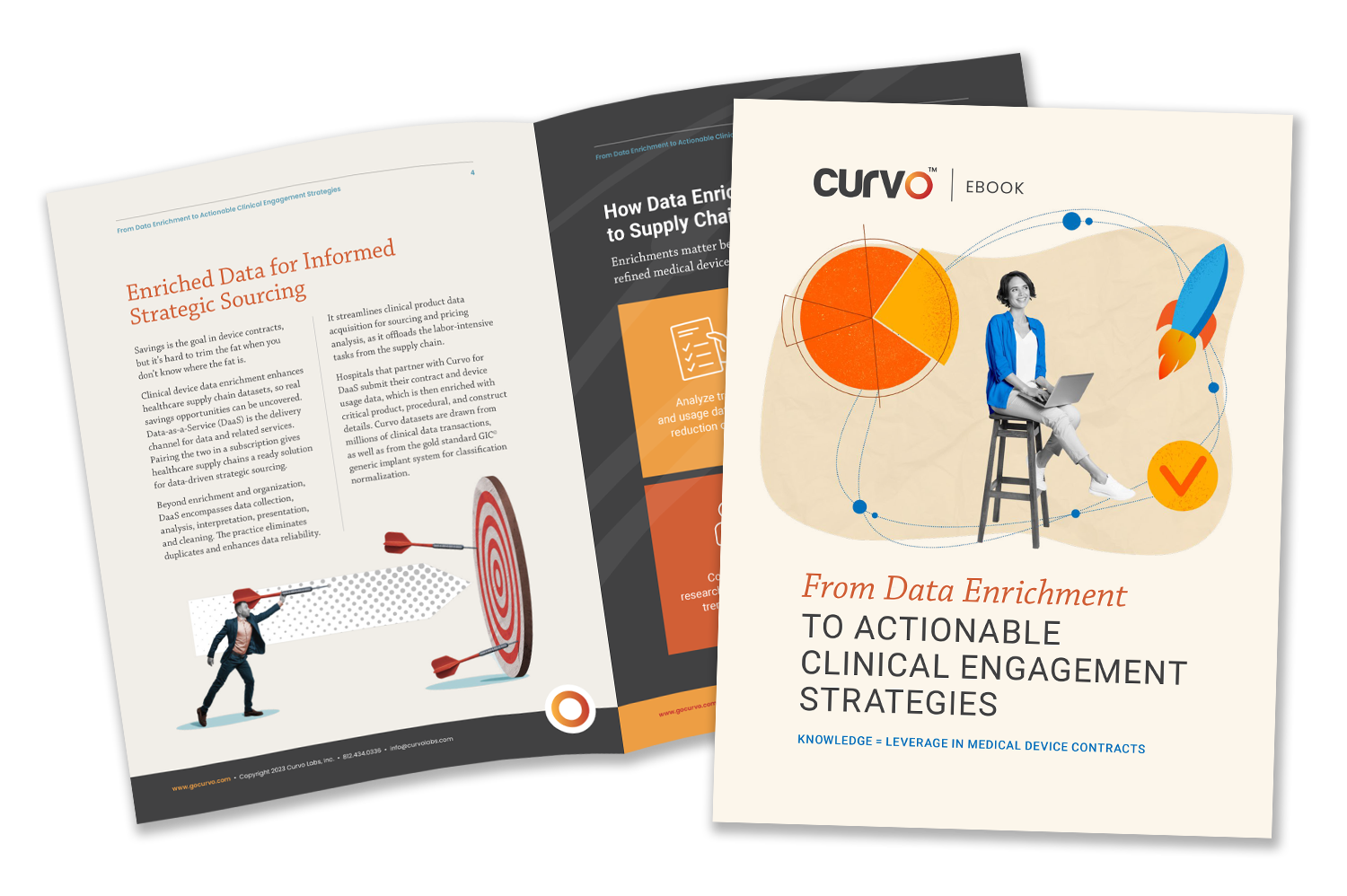Home Blog 2024 Outlook for Strategic Sourcing in Healthcare - Part 2

2024 Outlook for Strategic Sourcing in Healthcare - Part 2
Best Practices Leadership & Strategy

Joe Jackson
We heard from Curvo CEO Andy Perry on what’s ahead for strategic sourcing in healthcare. In this blog we get predictions from Joe Jackson, Curvo VP of Customer Experience and long-time healthcare supply chain veteran. Read this blog for highlights of our interview with him.
Push to Get Supply Expenses as Competitive as Possible
A lot of the push for hospitals is trying to get revenue, profitability and cost to pre-pandemic levels. That's a big driver in 2024. What jumps out to Joe is supplies.
“Hospitals have gotten control of a lot of their expenses back to pre-pandemic levels with the exception of supplies. As an industry nationally, we're still 6% higher in our supply costs than we were pre-pandemic. Why? Out of all the various metrics that hospitals report on, supply is still the roughest one to get your arms around.”
What drives some medical supply costs are the same types of items Curvo helps hospitals deal with. Total joints, pacemakers, stents, spinal implants, heart valves – they're high volume and a very high supply expense.
More Appetite for Supplier Volume Consolidation in 2024
Hospitals have treated those types of clinical supply items as physician preference items (PPI). Traditionally, whatever the physician wanted, the physician got, because they were bringing in revenue and patients.
That has been changing over the last five to eight years, and hospitals are influencing those PPI buying decisions more than they have in the past. There is more interest and appetite across health systems to look at volume consolidation, and go sole source or dual source and not whatever the physician wants.
“In 2024, we're going to see more hospitals look at consolidation of their supplier base to take advantage of volume discounts. That's not a news flash if you’re talking gowns and gloves. Why that's different is these highly sensitive physician preference items. I think that's the last frontier to really get back to pre-pandemic levels,” he noted.
Supplier and Provider Partnerships for Reduced Clinical Variation
There's a groundswell movement towards building partnerships for reduction of clinical variation of supplies. This raises conversations about supplier consolidation around PPI, supplier streamlining and reduced variation.
“I do think we're going to see a lot more of that in 2024,” said Joe. “The focus will be on mutually beneficial connections and partnerships between the supplier base and the provider base. That will require increased trust and transparency. Data-backed conversations will carry a lot of weight.”
The roadblock to making this reality is often the physicians, if they lack transparency into the economic reality of unwarranted variations. Supply chains fix that by sharing the data and analysis about supply consolidation for the reduction of clinical variation.
“Reducing variation doesn't mean patient care quality becomes a casualty,” Joe declared. “You can have both. You can have high quality care along with a reduction of unwarranted clinical variation.”
How Far Will Your Healthcare Supply Chain Go in 2024?
What’s ahead for your organization this year? Any of these predictions sound familiar? Reach out if you’d like to have a conversation about taking strategic sourcing to the next level in 2024.

